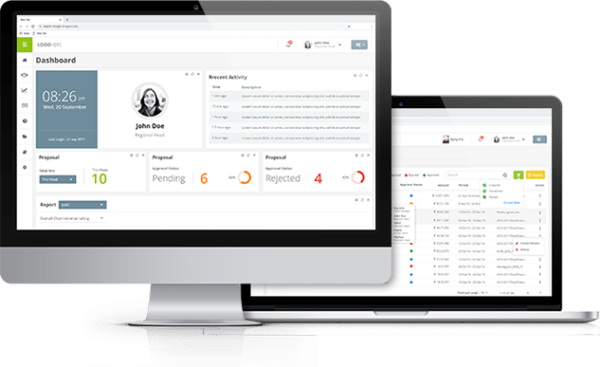In the competitive landscape of web services, performance optimization is crucial for delivering a seamless user experience and maintaining customer satisfaction. This blog explores various techniques and strategies to optimize the performance of web services, ensuring reliability, scalability, and responsiveness.
Caching Mechanisms
By storing frequently accessed data closer to the user, caching reduces the time it takes to retrieve information from the original data source. This proximity minimizes network latency and improves the overall responsiveness of the web service. Caching allows web services to respond to user requests more quickly since the required data is readily available in the cache. As a result, users experience faster load times and smoother interactions with the application, leading to a better overall user experience. Caching helps alleviate the load on backend servers by serving cached data directly to users whenever possible. This reduces the strain on resources and improves the scalability of the web service, allowing it to handle a larger volume of concurrent requests without performance degradation. By serving cached data instead of fetching it from the original data source, caching reduces the number of requests that need to be processed by backend servers. This lowers server load, conserves server resources, and enables more efficient utilization of computing resources. Caching frequently accessed data can also result in significant bandwidth savings, especially for large files or resources such as images, videos, and documents. By serving cached content locally or from edge servers, web services can reduce data transfer costs and minimize network congestion.
Asynchronous Processing
By executing tasks asynchronously, web services can handle multiple operations concurrently without waiting for each operation to complete before moving on to the next one. This non-blocking behavior ensures that the service remains responsive to incoming requests, even when dealing with resource-intensive tasks. Asynchronous processing allows web services to execute tasks in parallel, leveraging the available computing resources more efficiently. This parallelism accelerates the overall execution time, reducing latency and improving response times for users. Asynchronous processing maximizes the utilization of CPU and I/O resources by overlapping computation with I/O-bound operations such as database queries, file I/O, or network requests. This prevents the CPU from idling while waiting for I/O operations to complete, leading to better resource utilization and overall system efficiency. Asynchronous processing facilitates horizontal scalability by enabling web services to handle a larger volume of concurrent requests without increasing response times or resource contention. By executing tasks concurrently, asynchronous web services can distribute the workload across multiple threads, processes, or servers, ensuring consistent performance under heavy loads. Asynchronous processing allows web services to perform non-blocking I/O operations, where the service can continue executing other tasks while waiting for I/O operations to complete. This eliminates the need for threads to wait idly for I/O events, preventing thread blocking and maximizing throughput.
Load Balancing
Load balancing ensures that no single server is overwhelmed with incoming requests, thereby optimizing resource utilization across the infrastructure. By evenly distributing the workload, load balancers prevent any one server from becoming a bottleneck, thus maximizing the overall capacity and performance of the system. Load balancers enhance the availability of web services by distributing traffic across multiple servers or instances. In the event of a server failure or maintenance, the load balancer redirects traffic to healthy servers, ensuring continuous service delivery and minimizing downtime. This fault-tolerance mechanism improves the reliability and resilience of the system. Load balancing facilitates horizontal scalability by enabling web services to scale out across multiple servers or instances. As traffic increases, additional servers can be added to the pool, and the load balancer automatically distributes incoming requests among them. This dynamic scaling capability allows web services to accommodate growing user demand without sacrificing performance or responsiveness. Load balancers can route incoming requests to the server with the least amount of load or the shortest response time, optimizing performance and reducing latency for end-users. By dynamically adjusting traffic distribution based on server health and performance metrics, load balancers ensure optimal resource allocation and a consistent user experience.
Database Optimization
Optimized databases execute queries more efficiently, resulting in faster response times for web service requests. Techniques such as proper indexing, query optimization, and database schema design can significantly reduce query execution times, improving overall system performance. A well-optimized database can handle a larger volume of transactions and requests without experiencing performance degradation. Scalable database architectures, such as sharding, partitioning, or replication, ensure that the database can grow with the increasing demands of the web service, maintaining responsiveness and availability under heavy loads. Database optimization minimizes resource consumption, such as CPU, memory, and disk I/O, leading to more efficient utilization of server resources. By optimizing queries, eliminating redundant data, and managing indexes effectively, database servers can handle more concurrent connections and transactions while consuming fewer resources. Optimized databases implement efficient concurrency control mechanisms to manage concurrent access to data by multiple users or processes. Techniques like row-level locking, optimistic concurrency control, and multi-version concurrency control (MVCC) ensure data consistency and prevent contention, enabling higher throughput and better performance.
Content Delivery Networks (CDNs)
CDNs consist of a distributed network of servers strategically located in various geographic regions around the world. These servers, also known as edge servers or PoPs (Points of Presence), are positioned closer to end-users to minimize latency and reduce the distance data needs to travel. CDNs cache static assets such as images, CSS files, JavaScript libraries, and multimedia content on their edge servers. When a user requests a resource, the CDN delivers the cached content from the nearest edge server instead of fetching it from the origin server. This reduces the time it takes to retrieve the content and improves overall page load times. By caching static assets closer to end-users, CDNs significantly reduce latency and improve response times. Users receive content from nearby edge servers, resulting in faster data transfer and quicker page rendering. This enhanced responsiveness leads to a better user experience and higher engagement. CDNs enhance the performance of web services by offloading traffic from origin servers and distributing it across multiple edge servers. This distributes the load more evenly, reduces server congestion, and ensures consistent performance even during traffic spikes or high demand periods. By serving cached content from edge servers, CDNs reduce the bandwidth usage of origin servers and optimize data transfer across the network. This leads to significant bandwidth savings, particularly for large files or resources that are frequently accessed by users.
Compression and Minification
Compressing and minifying resources reduces their file sizes, resulting in faster download times for website visitors. Smaller file sizes mean less data to transfer over the network, leading to quicker page rendering and improved user experience. Smaller file sizes contribute to overall website performance by reducing the amount of data that browsers need to process and render. This results in faster page rendering, smoother interactions, and shorter response times, enhancing the perceived speed and responsiveness of the website. Compressing and minifying resources reduces the amount of bandwidth required to serve web pages to users. This leads to significant bandwidth savings for website owners, particularly for high-traffic websites or those serving large files such as images, videos, or downloadable content. With the increasing prevalence of mobile devices and varying network conditions, optimizing file sizes becomes even more critical for delivering a seamless mobile experience. Smaller file sizes reduce the data transfer requirements for mobile users, resulting in faster page loads and improved performance on mobile networks. Website speed is a crucial factor in search engine optimization (SEO), with search engines like Google considering page speed as a ranking factor. By optimizing file sizes and improving website performance, websites can potentially rank higher in search engine results pages (SERPs), leading to increased visibility and traffic. Smaller file sizes reduce the load on web servers by requiring less processing power and fewer resources to serve content to users. This helps improve server scalability and reliability, particularly during peak traffic periods or when serving content to a large number of concurrent users.
Monitoring and Profiling
Continuous monitoring allows web service operators to detect performance issues and bottlenecks as soon as they arise. By monitoring key metrics such as response times, CPU usage, memory consumption, and network traffic in real-time, operators can identify anomalies and take proactive measures to address them before they escalate into critical problems. Continuous monitoring provides valuable insights into the performance characteristics and resource utilization patterns of web services. By analyzing monitoring data over time, operators can identify areas of inefficiency, overutilization, or underutilization and implement optimization strategies to improve resource allocation and utilization. Profiling involves analyzing the execution of code and identifying performance bottlenecks, hotspots, or areas of inefficiency within the application. By profiling critical components of the web service, developers can pinpoint specific functions, database queries, or system calls that are causing performance degradation and optimize them for better efficiency. Profiling helps optimize resource allocation by identifying resource-intensive operations or processes that consume excessive CPU, memory, or I/O resources. By optimizing resource allocation based on profiling results, operators can ensure that resources are allocated efficiently and that critical components of the web service receive the necessary resources to perform optimally.
Optimizing the performance of web services is a multifaceted endeavor that requires a holistic approach encompassing caching, asynchronous processing, load balancing, database optimization, CDN utilization, compression, and vigilant monitoring. By implementing these techniques judiciously, web service providers can enhance scalability, reliability, and user satisfaction in today’s competitive digital landscape. Connect with https://www.zinemind.com/ to learn more about Performance Optimization Techniques for Web Services.












